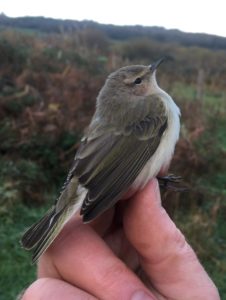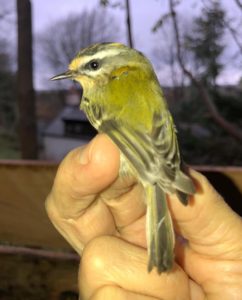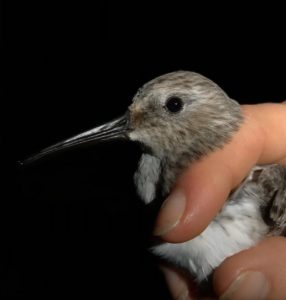It has been an excellent year for permits. We have gained a new Trainer in Wayne Morris, Stephen Edwards (now based in East Anglia) achieved his A Permit, and Martin Thomas (previously restricted to a C for traps), Colin Baker, Jo Conway and Richard Dann their C Permits.
Wayne’s Training Permit is a real benefit to the Group and to ringing in South Wales, as there is now an active Trainer in the valleys. Stephen now ‘has his wings’: his activities are always ambitious and impressive and we hope to welcome him back on numerous occasions in future. Colin is a returning ringer, having been a C Permit holder in the past, and along with Martin, Jo and Richard is developing his own projects. The data we collect in South Wales will be the better for all of their activities, and congratulations are due to all for their commitment and achievement.
November has been slow. Totals are as follows:
| Species Name | Ringed | Recaptured | Total |
| Blackbird | 1 | 1 | 2 |
| Blue Tit | 55 | 36 | 91 |
| Cetti’s Warbler | 3 | 3 | 6 |
| Chaffinch | 7 | 7 | |
| Chiffchaff | 8 | 8 | |
| Coal Tit | 2 | 5 | 7 |
| Dunlin | 1 | 1 | |
| Dunnock | 6 | 8 | 14 |
| Firecrest | 4 | 1 | 5 |
| Goldcrest | 44 | 2 | 46 |
| Goldfinch | 5 | 5 | |
| Great Spotted Woodpecker | 2 | 4 | 6 |
| Great Tit | 7 | 11 | 18 |
| Greenfinch | 2 | 1 | 3 |
| Jack Snipe | 1 | 1 | |
| Long-tailed Tit | 14 | 13 | 27 |
| Marsh Tit | 2 | 2 | |
| Meadow Pipit | 4 | 4 | |
| Redwing | 11 | 11 | |
| Reed Bunting | 10 | 1 | 11 |
| Robin | 14 | 14 | |
| Snipe | 16 | 16 | |
| Song Thrush | 2 | 1 | 3 |
| Wren | 5 | 3 | 8 |
| Grand Total | 210 | 106 | 316 |
Of particular note have been:
- A ‘tristis’-type chiffchaff. Instantly apparent in the net from it’s grey head, strong supercilium, white underparts and strong green tones to the wing feathers. The second we have captured at the site.
- A more typical collybita chiffchaff, but with a deformed bill. We see a fair few birds with bill deformities, but not normally small warblers.
- A single dunlin. Not a great reward for a long commute followed by a long walk in the dark at Whiteford. We are increasingly of the view that they are easier to catch at the site during autumn passage, and more difficult to track down in the late autumn and winter.
- Four new firecrests. Three at Oxwich and one at Pwll Du (where a second was seen on the same day). Interestingly, one of the firecrests captured at Oxwich was recaptured at Pwll Du a week later, an easterly movement of approximately 8 km.
- A jack snipe. The first since the late winter / early spring. They are less in evidence at Oxwich at present. This may be due to high water levels, or it could be the lack of cattle this winter – they often seem to be associated with cattle grazed / poached areas.
- A good total of 16 common snipe. This takes us over 50 birds ringed on the marsh for the third successive year, and to 200 ringed in total since our first in late 2014.
Thanks to all who have made it out during the month: Heather Coats, Keith Vaughton, Wayne Morris, Alex McCubbin, Amy Schwartz, Bethan Dalton, Claudia Allen, Colin Baker, Dionne Jenkins, Jo Conway, Lucy Rowley, Miguel Lurgi, Rachel Shepherd, Richard Dann, Sarah Davies and Val Wilson.
Pictures, mainly from Amy Schwartz and Richard Dann follow
Owain Gabb
29/11/2019





